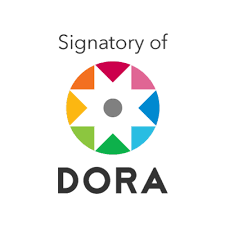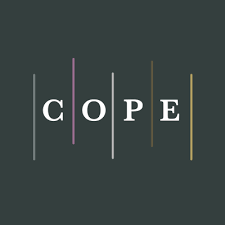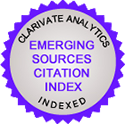FOCUS AND SCOPE
The Transport and Territory Journal is an electronic publication, biannual, which is disseminated free of charge, exclusively through the Internet. It is designed and edited by the members of the Transport and Territory Program of the "Romualdo Ardissone " Institute of Geography, Faculty of Philosophy and Letters, University of Buenos Aires.
Conceived as a pluri and interdisciplinary publication, it is primarily aimed at the Argentinean and Ibero-american academic public, but is also open to the reception of works and proposals from readers from other geographical or sectorial areas (business, civil society organizations, political decision makers, etc.).
The journal invites the dissemination of empirical and theoretical research to address territorial issues, in connection with processes of mobility, circulation, transportation, migration and displacement, encouraging critical thinking.
It should be noted that this is not a journal on technical transport issues, which address such specific issues as materials for road construction or efficiency in the energy consumption of vehicles, but social studies on transport and/or the mobilities, and the ways in which they are associated with different spatial or territorial themes.
The Transport and Territory Journal opens up as a space for the circulation of theoretical-methodological reflections, empirical records, research advances, experiences of intervention and planning, and methodological developments that link issues related to transport and territory, considering these categories broadly. In this sense it is worth mentioning that the territory concept is susceptible of diverse interpretations: traditionally considered as a means or jurisdiction, it is today preferably conceived from a relational perspective, as a process of institutionalization, as a lived space, as a used space or as a methodological matrix. It is a category in the process of constant revision, resignification and incorporation into different fields of scientific knowledge.
The objective is to achieve a contribution in line with the current scientific demands of the university and professional community, from the social, economic, political, cultural and environmental, calling the debate of ideas from diverse disciplinary viewpoints and with plural conceptual frameworks.
Each issue of the magazine is composed of three main sections:
- Thematic dossier. This section gathers articles under the same thematic, spatial or problematic coverage, coordinated by one or more professionals recognized in their specialty, invited by the Editorial board. They will be in charge of inviting the authors who will compose the dossier and of writing an article that will serve as a presentation.
- Free articles. Freely sent contributions will be included here, whose reception is open permanently.
- Reviews, opinions, bibliographic reviews, as well as announcements or notes on academic or other events, related to the subject of the publication.
PUBLICATION FREQUENCY AND APC
The journal is published half-yearly. The first issue between January and June of each year; the second between July and December.
Transporte y territorio does not charge fees of any kind for sending or publishing its articles (APC).
PEER REVIEW PROCESS
- The works must be original, they must not be published in other media or in evaluation process for this purpose.
- The originals must conform to the objectives and editorial guidelines of the Transport and Territory Journal, as explained in this document. Failure to comply with this requirement, in consideration of the Editorial board, will determine its return.
- The working language will be, indistinctly, Spanish or Portuguese.
- The authors will assign the rights of dissemination of their publication by electronic means through a written note that will be provided in a timely manner.
- Contributions will be submitted to the arbitration of two evaluators, ensuring that the total time for the review does not exceed four months. It will go to professionals, Argentines or foreigners, who have a training equivalent or superior to that of the authors. They will recommend or not the publication, being able to suggest adjustments and corrections. The evaluation will be done following the double-blind modality. Therefore, when the reviewers receive the article to be evaluated, the identity of the authors will be kept anonymous; for which the editor will take care of deleting any element that implies its identification. Likewise, when verifying the submission of the evaluations to the authors, the identity of the reviewers will also remain anonymous, unless they express their will to the contrary.
- Evaluators may dictate the following options: (1) Acceptance without modifications; (2) Acceptance conditional upon correction; (3) Rejection, offering the author the opportunity of a new evaluation, after the integral correction of the work; (4) Rejection without opportunity for a new revision. In case one of the evaluations is positive (options 1 or 2) and the other negative (3 or 4), the article will be sent to a third evaluator. In case this additional evaluation is positive, the author will be offered the opportunity to review the article for publication. In case it is negative, the work will be rejected.
- Authors who receive suggestions from the evaluators will have a period of one month to submit the new corrected version. They should attach a note indicating the list of changes regarding the recommendations received.
- The length of the articles should not exceed 30 pages (approximately 100,000 characters, with spaces), considering a DIN A4 format, with all margins of 2.5 cm, Arial 11 Normal font.
EVALUATION TIMES
The time to get a response will depend on the compliance of editorial policies.
The time that elapses between the receipt of the article and the subsequent stages of evaluation will depend on the availability of the peers to evaluate them and the promptness with which the authors respond to the round of corrections. The process can take approximately three (3) to six (6) months after the article has been submitted to the journal.
During this time, authors are asked to refrain from submitting their article in other journals. In the event that an article is objected or rejected by its peers, the Editorial board will inform the author of the results of the evaluation.
Antiplagiarism
The journal maintains an anti-plagiarism and self-plagiarism policy for both electronic sources and printed sources to guarantee the originality of all manuscripts. All contributions are checked with anti-plagiarism programs. If plagiarism or self-plagiarism is detected, the manuscript will not be considered for publication.
Self-archive policy
This journal allows the deposit in repositories, institutional pages or others, of all versions of the article.
1.jpg)

3.png)























